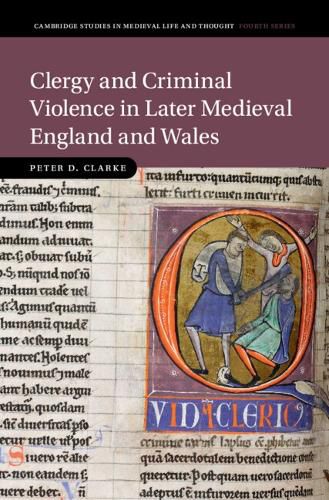Readings Newsletter
Become a Readings Member to make your shopping experience even easier.
Sign in or sign up for free!
You’re not far away from qualifying for FREE standard shipping within Australia
You’ve qualified for FREE standard shipping within Australia
The cart is loading…






Clergy formed a distinct and privileged group in later medieval society as regarded violent crime. Church law was intended to protect them from it, induce them to avoid it, and exempt them from secular justice following it. But in practice, were the clergy so separate from the violent culture around them and different from the laymen who dominated it? In the first full-length study of this subject in the later medieval period, Peter Clarke shows that clergy accused of violent and other crimes increasingly submitted to secular justice like laymen, seeking clerical immunity only as a last resort. It reveals that church authorities, in providing legal redress for clerical victims of lay violence, sought to heal divisions between laity and clergy, not to deepen them. Additionally, it explores the motives and contexts behind clerical involvement in violent crime, both as perpetrators and victims, revealing that clergy often acted similarly to laymen.
$9.00 standard shipping within Australia
FREE standard shipping within Australia for orders over $100.00
Express & International shipping calculated at checkout
Clergy formed a distinct and privileged group in later medieval society as regarded violent crime. Church law was intended to protect them from it, induce them to avoid it, and exempt them from secular justice following it. But in practice, were the clergy so separate from the violent culture around them and different from the laymen who dominated it? In the first full-length study of this subject in the later medieval period, Peter Clarke shows that clergy accused of violent and other crimes increasingly submitted to secular justice like laymen, seeking clerical immunity only as a last resort. It reveals that church authorities, in providing legal redress for clerical victims of lay violence, sought to heal divisions between laity and clergy, not to deepen them. Additionally, it explores the motives and contexts behind clerical involvement in violent crime, both as perpetrators and victims, revealing that clergy often acted similarly to laymen.